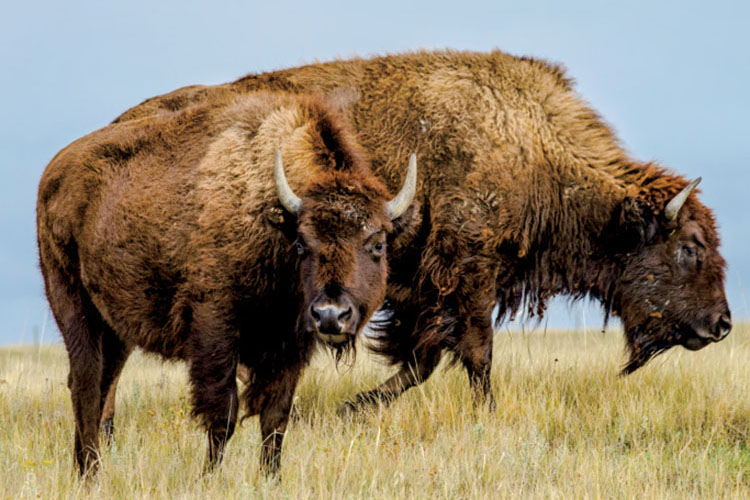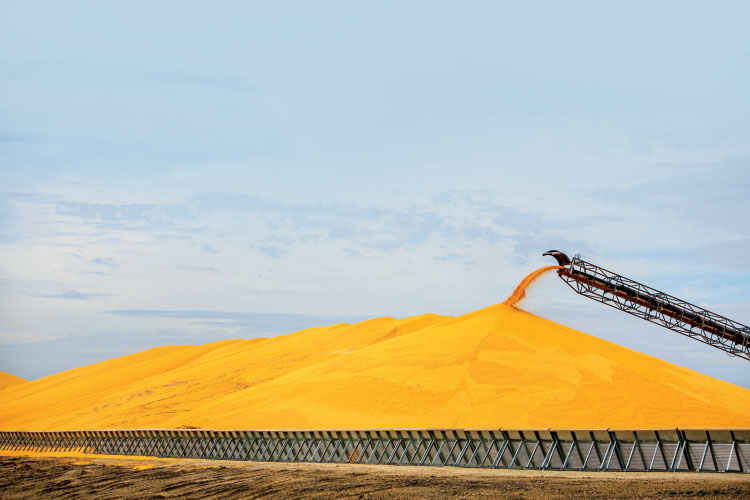Home > North Dakota > North Dakota Crops & Livestock > North Dakota’s Economy Benefits from Value-Added Agriculture
North Dakota’s Economy Benefits from Value-Added Agriculture
In partnership with: North Dakota Department of Agriculture

North Dakota is like the world’s superstore, exporting agricultural commodities and products to nearly 90 different countries. Adding value to farm products before they leave the state creates more jobs and delivers a broad range of positive economic impact.
Value-Added Agriculture
Value-added agriculture refers to any activity adding economic value to farm-raised products by changing their state or form.
“You can add value by a wide range of processes, services and technologies,” says John Schneider, former director of Agricultural Products Utilization Commission and current economic development and finance division director at the North Dakota Department of Commerce. “Value-added agriculture is one of the pillars for economic development strategy in North Dakota.”
Wheat mills have long added value to the state’s largest crop. The North Dakota Mill, in Grand Forks, is the country’s largest flour mill. North Dakota businesses also add value to high percentages of soybeans and other oilseeds grown here (like canola and sunflower), potatoes, corn, and sugarbeets.
“A very large percentage of our sugarbeet crop is processed right here,” Schneider says. “That not only provides value to farmers, but it supports jobs for the state.”
 Food and Fuel
Food and Fuel
Making ready-to-eat foods from farm products helps a farm or ranch capture a larger share of the consumer’s food dollar. North Prairie Signature in Leeds creates summer sausage, meat sticks and jerky from farm-raised bison.
Specialty foods, like North Prairie Signature’s bison products, have been a profitable value-added niche for some producers.
“Adding value can be as simple as cleaning pulses and packaging them in 5-pound or 50-pound bags for export,” Schneider says. “We are looking for new companies that complement our existing pulse companies.”
Ethanol is a remarkable value-added agriculture success story in North Dakota. The state’s five ethanol plants now purchase 40 to 60 percent of North Dakota’s corn production, annually contributing nearly $625 million to the state’s economy. Each ethanol plant has an average payroll of $3.3 million, at 47 jobs per plant. And the impact does not end there.
“Studies indicate that we create up to 4,000 indirect jobs between our two sites,” says Jeff Zueger, CEO of Midwest AgEnergy Group. The company operates Blue Flint Ethanol near Underwood and Dakota Spirit AgEnergy near Jamestown.
Corn and Soybeans
Zueger says corn farmers have benefited big from the five plants.
“Ethanol plants offer an opportunity for North Dakota farmers to have a steady, year- round processing facility market, with an offer to buy product to process on a much more consistent level,” he says. “This naturally creates opportunities for farmers to market their products into delivery periods that work best for their individual business model.”
North Dakota farmers often alternate corn with soybeans from year to year. Many soybeans are shipped to out-of-state crushing plants, which separate soy oil from soybean meal.
“We have always been looking for another opportunity to add value to soybeans before they leave the state,” says Schneider.
A new soybean crushing facility planned for Jamestown will benefit area farmers. That means another value-added enterprise for North Dakota – along with more jobs and more economic impact from a crop already growing here.




Keep on working, great job!
I had hoped you would add something about the dangers of raw milk. There is a LOT of disinformation out there concerning its nutrition, taste, and “allergens.” As a result there are many that buy raw milk that by a loophole in Georgia law is legal if labeled for pet use only. It is only a matter of time before some one becomes very sick from drinking unpasteurized milk.
I grew up on a dairy farm in Morgan county and I averaged about a quart of raw milk a day growing up. I have found that I can not tell the taste between the old raw milk and non homogenized milk that has been pasteurized.
It is a health concern that needs to be addressed. I think it would be a more worthy cause for our esteemed state legislature than trying to allow discrimination based on religious principals.
I would like to know WHEN the testing started for antibiotics. I know it was not from the beginning. Year please.
Secondly, farmers keep them in housing…as mentioned but these animals that need outside exposure too. Is there any healthy amount daily?
For us, if we were kept in the house all day, we would go crazy… case in point. I would like to know if our GA Dairy farmers have outside exposure like Wisconsin?
The other answers were good. Sometimes answers need history information….The public have more resources to research …and when an answer is not complete, it makes the reader think your hiding something that may change opinions. Thanks. 2015
There is a lot of testing put into the milk, once when the milk truck arrives to the dairy to pick up, again when you get to the processing plant, then again once the milk in going through the process of getting processed. They do get so much outside exposure when the weather is nice enough. If it is to muddy they can not go outside due to the risk of mastitis or them getting injured.
Working in a milk processing plant 42 years l know we tested every load of milk that hit our lot. Daily up to 60 loads of farm fresh milk daily. Not a single truck was hooked up to unload till an antibiotic check was run in our state certified lab. And hot load ( testing positive for antibiotics) We was mandatory we contact our state Indiana Board If Animal Health instructor and he would follow the load to a dump site and make a report on every farm s milk in that load. Each farm sample was retested and when the farm was found the inspector would go to that farm put more samples and issue warnings. I have visited many farms and always found shelter with open farm lots , open fields. Only a fool would cut their own throat by mistreating their livelihood. Oh it happens at times when hired help gets mad with their jobs and does dumb things. No a single farmer would allow it, and remove that type person. Our plant was inspected by U.S.D.A., F.D.A. , State Board Of Animal Health . Many foods are brought into our country with little to no inspection at all !?